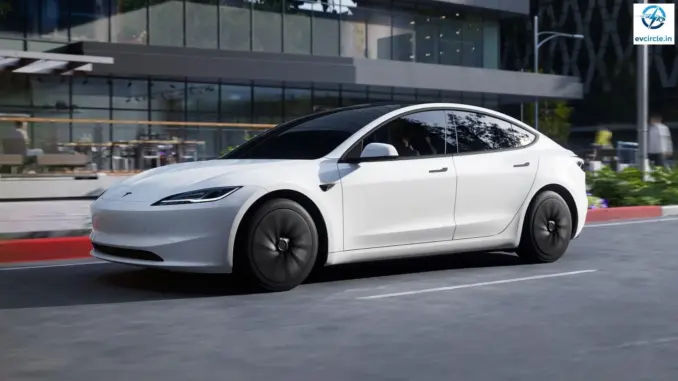
Tesla has rolled out the long-promised budget versions of the Model 3 and Model Y. But the newly introduced “Standard” trims, listed at $37,000 and $40,000 respectively before fees, debut only a week after U.S. buyers lost eligibility for a $7,500 federal EV tax credit, effectively making these vehicles more expensive than they were previously.
Tesla’s new Standard models are pared-down editions of their “Premium” siblings.
According to Tesla’s website, the Model 3 Standard will be priced at $38,630, including destination and order fees, and is expected to be available in December or January.
The Model Y Standard, at $41,630 with fees, is slated to reach customers in November or December.
Relative to the Premium trims, the new versions eliminate several notable features. They include seven speakers instead of 15 and no subwoofer, cloth seating rather than cloth and microsuede, and no second-row eight-inch touchscreen.
Tesla also dropped ambient lighting, certain exterior light bars, power-folding mirrors, and other enhancements introduced in past refreshes.
Both Standard models are equipped with a smaller 69 kWh battery pack, resulting in reduced range and slower acceleration.
They also employ “passive shock absorbers” instead of the “frequency dependent” units found in Premium trims. Nevertheless, Tesla kept core software, charging functionality, and active safety systems intact, offering access to its Full Self-Driving (Supervised) suite as an optional add-on.
Price hike despite “affordable” label
Tesla marketed these models as more budget-friendly options after years of promising a $25,000 “Model 2.”
That project was reportedly shelved earlier this year, despite CEO Elon Musk’s initial denials. Instead, Tesla began discussing “more affordable models” during its Q1 2024 earnings call, with production anticipated in the first half of 2025.
The Standard editions are indeed less expensive than yesterday’s Premium trims, with the Model Y down $5,000 and the Model 3 down $5,500. But the timing undermines that reduction.
A week ago, both vehicles qualified for the $7,500 federal tax credit under the Inflation Reduction Act. With that incentive now gone, the effective cost for most purchasers has risen.
Before the credit expired, the Premium Model Y cost about $37,490 after the rebate. Today, the new “cheaper” Model Y Standard starts at $39,990, roughly $2,500 more than last week. The Model 3 shows a similar pattern, increasing about $2,000 in effective price. For more context on the impact of such policy changes, see our article on What Happens Now That the EV Tax Credit Is Gone.
Market reaction and outlook
Tesla shares slipped about 4% an hour after the announcement, as investors had been expecting more aggressively priced options. The company had just reported record third-quarter sales driven by buyers rushing to complete purchases before the credit ended.
However, earlier this year, Tesla recorded its steepest drop in deliveries across the first two quarters.
During Tesla’s April earnings call, CFO Vaibhav Taneja said, “We started the production of the lower cost model as planned in the first half of 2025.” He added that the ramp would be slower than expected due to production complexity and the company’s focus on maximizing sales before the credit expiration.
Other automakers, including Hyundai, are already introducing cheaper EVs, some priced nearly $10,000 lower than prior versions.
Tesla, meanwhile, faces mounting competition and the potential for surplus production capacity at its U.S. plants.
With its new Standard trims, Tesla has technically fulfilled its promise of more affordable cars, but largely only on paper. For most buyers, the cost of entry into Tesla ownership has just increased.
For those considering an electric vehicle, it can be helpful to read an Electric Car Ownership Guide for Indian Drivers to understand the full scope of ownership.
Sustainability advocate with a keen eye on policies, trends, and real-world EV impact.
Leave a Reply